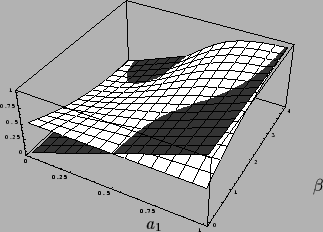Especially interesting
are ![]() -independent
-independent
![]() =
=
![]() with
with ![]() -independent determinants so
-independent determinants so
![]() or
or
![]() , respectively,
do not have to be calculated.
, respectively,
do not have to be calculated.
Notice that this still allows
completely arbitrary parameterisations
of ![]() .
Thus, the template function can for example be
a parameterised model,
e.g., a neural network or decision tree,
and maximising the posterior with respect to
.
Thus, the template function can for example be
a parameterised model,
e.g., a neural network or decision tree,
and maximising the posterior with respect to ![]() corresponds
to training that model.
In such cases the prior term
forces the maximum posterior solution
corresponds
to training that model.
In such cases the prior term
forces the maximum posterior solution ![]() to be similar
(as defined by
to be similar
(as defined by ![]() )
to this trained parameterised reference model.
)
to this trained parameterised reference model.
The condition of invariant
![]() does not exclude
adaption of covariances.
For example, transformations for real, symmetric positive definite
does not exclude
adaption of covariances.
For example, transformations for real, symmetric positive definite
![]() leaving
determinant and eigenvalues (but not eigenvectors) invariant
are of the form
leaving
determinant and eigenvalues (but not eigenvectors) invariant
are of the form
![]() with real, orthogonal
with real, orthogonal
![]() =
= ![]() .
This allows for example to adapt the sensible
directions of multidimensional Gaussians.
A second kind of transformations
changing eigenvalues but not eigenvectors and determinant
is of the form
.
This allows for example to adapt the sensible
directions of multidimensional Gaussians.
A second kind of transformations
changing eigenvalues but not eigenvectors and determinant
is of the form
![]()
![]() if the product of eigenvalues
of the real, diagonal
if the product of eigenvalues
of the real, diagonal
![]() and
and
![]() are equal.
are equal.
Eqs.(29,35)
show that the high temperature solution becomes
a linear combination
of the (potential) low temperature solutions
 |
(41) |
 |
 |
For two prior components, i.e., ![]() ,
Eq.(42) becomes
,
Eq.(42) becomes
| (44) |
| (45) |
| (46) |